Club captain: Charles Goodyear
Good intro video: https://www.youtube.com/watch?v=mtBnu-YtibA
Activities are gatherings that occur on a regular schedule, usually weekly, to enjoy a specific pastime.
Club captain: Charles Goodyear
Good intro video: https://www.youtube.com/watch?v=mtBnu-YtibA
“HIKING” GREENWICH POINT PARK
6 TOD’S DRIFTWAY
OLD GREENWICH
Greenwich Point is a beautiful peninsula surrounded by Long Island Sound and Greenwich Cove. The walking trails are flat and well maintained which is a bonus because the scenery is just spectacular. For half of the hike the skyline of New York is clearly visible and the Greenwich shoreline and magnificent water views complete the circuit. This has always been our most popular hike of about 2.5 miles which should take us no more than one and a half to two hours. An optional lunch will follow at Applausi Osteria Toscana at 199 Sound beach Avenue in Old Greenwich, a hit with past hikers.
DIRECTIONS: GOOGLE GREENWICH POINT
Take Exit 5 off southbound I-95 and make a sharp right onto US 1 north. At the first traffic light make a right onto Sound Beach Avenue. Follow Sound Beach through Old Greenwich for 1.8 miles and turn right onto Shore Road at the T intersection. Shore Road becomes Tods Driftway and enters the park past the guard house. Park in the first lot on the right where we will meet at 10:30. Spouses and guests are invited and dogs on a leash are permitted in the park after December 1.
ATTIRE; It will likely be quite windy and cool on this exposed sprit of land so layer up!
CONTACT: David McCollum
Write up:
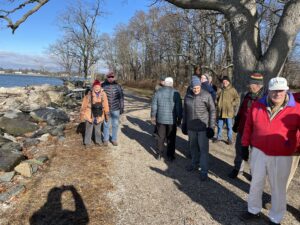 The US Postal Service has nothing on the DMA hikers—“neither rain nor snow…” oh, wait a minute, the day did not turn out badly after all! The overnight snow was still evident at 10:30 in the morning but not a footing issue and the sun came out later on the hike. A good size group of 17 including three spouses walked just short of 3 miles in an hour and a half around the spectacular property. It’s easy to see why Greenwich keeps it pretty much to residents for most of the year!
The US Postal Service has nothing on the DMA hikers—“neither rain nor snow…” oh, wait a minute, the day did not turn out badly after all! The overnight snow was still evident at 10:30 in the morning but not a footing issue and the sun came out later on the hike. A good size group of 17 including three spouses walked just short of 3 miles in an hour and a half around the spectacular property. It’s easy to see why Greenwich keeps it pretty much to residents for most of the year!
About half the group stayed on for a delicious lunch at the Beach House Café in Old Greenwich.
Again this hike, as others, give us DMAers a chance to walk and talk in some really nice places!
Next hike—Sherwood Island Park in Westport Thursday, January 12 at 10:00 AM
Dave McCollum
Bob Plunkett
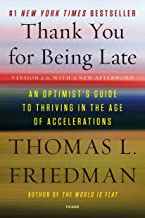 KIRKUS REVIEW
KIRKUS REVIEWThe celebrated New York Times columnist diagnoses this unprecedented historical moment and suggests strategies for “resilience and propulsion” that will help us adapt.
“Are things just getting too damned fast?” Friedman (Hot, Flat, and Crowded: Why We Need a Green Revolution—and How It Can Renew America, 2008, etc.) cites 2007 as the year we reached a technological inflection point. Combined with increasingly fast-paced globalization (financial goods and services, information, ideas, innovation) and the subsequent speedy shocks to our planet’s natural system (climate change, biodiversity loss, deforestation, geochemical flows), we’ve entered an “age of accelerations” that promises to transform “almost every aspect of modern life.” The three-time Pulitzer winner puts his familiar methodology—extensive travel, thorough reporting, interviews with the high-placed movers and shakers, conversations with the lowly moved and shaken—to especially good use here, beginning with a wonderfully Friedman-esque encounter with a parking attendant during which he explains the philosophy and technique underlying his columns and books. The author closes with a return to his Minnesota hometown to reconnect with and explore some effective habits of democratic citizenship. In between, he discusses topics as varied as how garbage cans got smart, how the exponential growth in computational power has resulted in a “supernova” of creative energy, how the computer Watson won Jeopardy, and how, without owning a single property, Airbnb rents out more rooms than all the major hotel chains combined. To meet these and other dizzying accelerations, Friedman advises developing a “dynamic stability,” and he prescribes nothing less than a redesign of our workplaces, politics, geopolitics, ethics, and communities. Drawing lessons from Mother Nature about adaptability, sustainability, and interdependence, he never underestimates the challenges ahead. However, he’s optimistic about our chances as he seeks out these strategies in action, ranging from how AT&T trains its workers to how Tunisia survived the Arab Spring to how chickens can alleviate African poverty.
Required reading for a generation that’s “going to be asked to dance in a hurricane.”
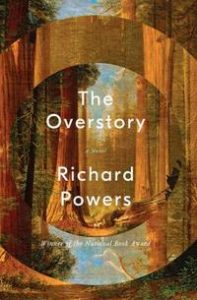 Powers’ (Orfeo, 2014, etc.) 12th novel is a masterpiece of operatic proportions, involving nine central characters and more than half a century of American life.
Powers’ (Orfeo, 2014, etc.) 12th novel is a masterpiece of operatic proportions, involving nine central characters and more than half a century of American life.
In this work, Powers takes on the subject of nature, or our relationship to nature, as filtered through the lens of environmental activism, although at its heart the book is after more existential concerns. As is the case with much of Powers’ fiction, it takes shape slowly—first in a pastiche of narratives establishing the characters (a psychologist, an undergraduate who died briefly but was revived, a paraplegic computer game designer, a homeless vet), and then in the kaleidoscopic ways these individuals come together and break apart. “We all travel the Milky Way together, trees and men,” Powers writes, quoting the naturalist John Muir. “In every walk with nature one receives far more than he seeks.” The idea is important because what Powers means to explore is a sense of how we become who we are, individually and collectively, and our responsibility to the planet and to ourselves. Nick, for instance, continues a project begun by his grandfather to take repeated photographs of a single chestnut tree, “one a month for seventy-six years.” Pat, a visionary botanist, discovers how trees communicate with one another only to be discredited and then, a generation later, reaffirmed. What links the characters is survival—the survival of both trees and human beings. The bulk of the action unfolds during the timber wars of the late 1990s, as the characters coalesce on the Pacific coast to save old-growth sequoia from logging concerns. For Powers, however, political or environmental activism becomes a filter through which to consider the connectedness of all things—not only the human lives he portrays in often painfully intricate dimensions, but also the biosphere, both virtual and natural. “The world starts here,” Powers insists. “This is the merest beginning. Life can do anything. You have no idea.”
A magnificent achievement: a novel that is, by turns, both optimistic and fatalistic, idealistic without being naïve.
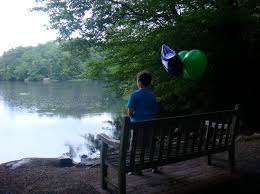
TUESDAY NOVEMBER 19, 2019
HIKING POMERANCE/MONTGOMERY PINETUM PARK
GREENWICH 10:00 AM
This 100 acre property is now owned by the town of Greenwich but was originally the estate of Ernest Seaton and later the home of financier Maurice Wertheim. The estate house was demolished by the town after falling into disrepair but the stone walls remain. Mr. Seaton is credited with starting a boys group called “The League of Woodcraft Indians” which evolved into the Boy Scouts. Wertheim’s daughter, Barbara Tuchman, lived on the property and wrote the Pulitzer Prize winning book “The Guns of August” there.
This hike is really more of a walk in the woods as the trails are wide, relatively flat and well maintained. It is a very scenic property with mature trees, rock outcroppings and moving water in addition to the historical features. As the property is relatively small, our hike will take approximately 2 hours after which we will enjoy an optional lunch at Louie’s Restaurant (136 River Road Ext.) nearby in Cos Cob.
DIRECTIONS: On Google Maps, enter Montgomery Pinetum on Bible Street in Cos Cob. There is another entrance to the park but parking there is limited. Go to the Bible Street entrance. We will gather in front of the Greenhouse building at 10:00 AM.
Take I-95 south to Exit 5 and stay in left lane on the ramp to turn left at the light onto US 1 south. Proceed .8 miles across the Mianus River Bridge and turn right into Nassau Street and then a quick left onto Valley Road. After .2 miles turn right into Orchard Street and then a quick right onto Bible Street. Drive .8 miles to a left turn into Montgomery-Pinetum Park. 15-20 minutes from Darien with average traffic.
Contact: David McCollum
On November 14 (Thurs) we will go to Flushing Queens. We will take the 8:34 train from Darien, 8:37 from Noroton Heights and regroup at the information booth in GCT. We will walk the sites of the 1939 and 1964 Worlds Fairs. We will tour the area of Arthur Ashe Stadium. Finally, we will visit the Queens Museum which has an extraordinary diorama of New York City. After lunch we will return.
Your guides: David Mace and Joe Spain
Clean technology is any process, product, or service that reduces negative environmental impacts through significant energy efficiency improvements, the sustainable use of resources, or environmental protection activities. Clean technology includes a broad range of technology related to recycling, renewable energy, information technology, green transportation, electric motors, green chemistry, lighting, and more.
New date and place: DCA second floor for 8:15- 9:15 on Monday December 9.
https://www.alvareztg.com/the-pros-and-cons-of-5g/
https://www.celltowerleaseexperts.com/cell-tower-lease-news/pros-cons-how-will-5g-impact-your-city/
https://www.bbc.com/news/world-europe-48616174
https://www.investors.com/news/technology/5g-stocks-5g-wireless-stocks/
https://www.nytimes.com/2019/07/16/science/5g-cellphones-wireless-cancer.html
https://www.barrons.com/articles/5g-stock-opportunities-51572025082?mod=hp_DAY_7
https://ieeexplore.ieee.org/abstract/document/6894452
HIKING WARD POUND RIDGE RESERVATION
THURSDAY OCTOBER 24, 2019
10:00 AM
Ward Pound Ridge Reservation is a 4,000 acre park located in Cross River, NY with more than 35 miles of hiking trails over varied terrain. We will be hiking a combination of two trails totaling about 4 miles with some moderate climbing and descending on the Leatherman’s Loop section. The reward for the climb is a spectacular view of the Cross River Reservoir and surrounding territory. The trails are wide, well maintained and clearly marked. Optional lunch will follow at Blind Charlie’s Café in Scott’s Corners.
SPOUSES, SIGNIFICANT OTHERS, FRIENDS AND GUESTS ARE WELCOME
DOGS ON A LEASH ARE ALLOWED.
We will assemble at the parking lot near the Rt 121 entrance (where the ticket booth is located) at 10:00 AM sharp. From there we will drive our cars to a large parking lot near the trailhead. DON’T BE LATE!
The hike will be led by Dave McCollum.
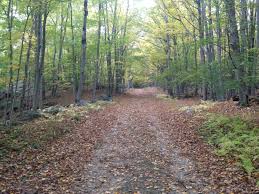
DIRECTIONS:
Address—6 Reservation Road, Cross River, NY 10518
Using either Ct Route 124 up through central New Canaan, or the Merritt and High Ridge Road (Exit 37) proceed to the junction of 124 and 137 in Pound Ridge.
Continue north on NY 137 past the Inn at Pound Ridge and bear left at the fork, staying on 137. When 137 ends at NY 121, turn right onto 121 and follow 121 about 2.9 miles to the clearly marked right turn into Ward Pound Ridge Reservation. Proceed to the ticket booth. No entrance fee charged this time of year.
We will be walking on October 17 from the Battery in lower Manhattan up the promenade on the Hudson River to 34th Street. Along the way we will explore the new Hudson River Park and the many new piers that have been built on the route. Of course we will stop for lunch. On a nice October day this will be a spectacular walk.
© 2025 Darien Mens Association
Theme by Anders Noren — Up ↑